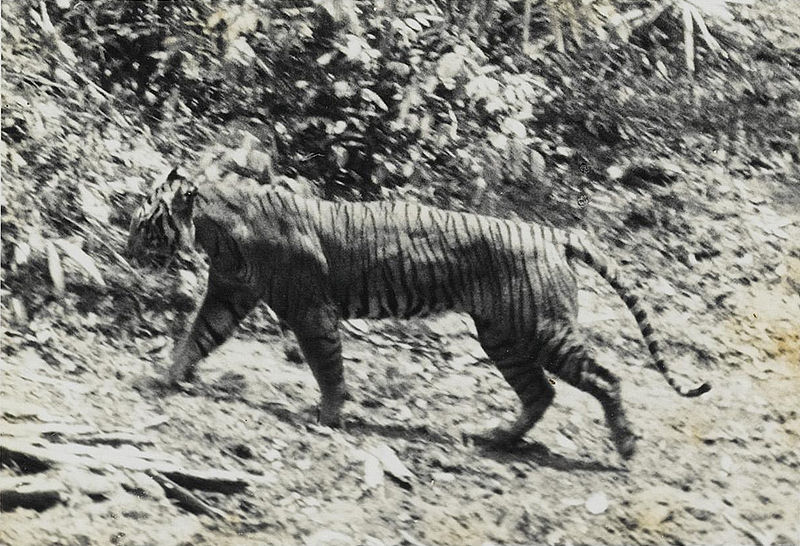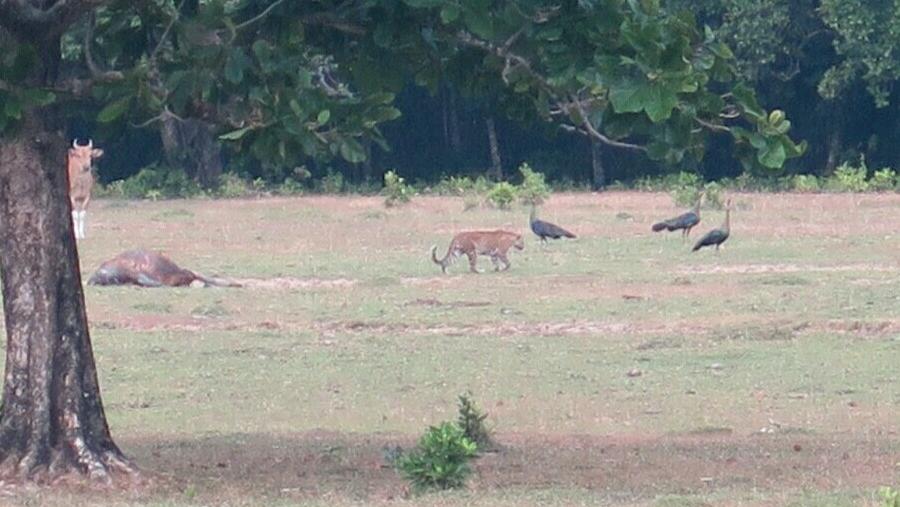The species panthera tigris sondaica, better known as the Javan tiger, has been considered extinct for decades as there have been no confirmed sightings of the big cat that once stalked the jungles of Indonesia’s biggest island since the 1980s. But based on photographic evidence from Java’s Ujung Kulon National Park in West Java, the Javan tiger may be making a comeback.
This new photographic evidence of the Javan tiger’s continued existence was captured late last month but was only revealed to the media recently. It was taken by a park ranger while doing an inventory of banteng (a species of wild Javan cattle) on August 25. At the time, he saw a dead banteng being eaten by a big cat unlike any species known to reside in the park.
“My fellow ranger saw a large cat, but with stripes a bit different from the leopards usually found in Ujung Kulon. Finally, he photographed it, and we suspect it is either a type of Javan leopard or another one of the large cats, such as the Javan tiger,” Ujung Kulon Park Head Mamat Rahmat told Detik on Wednesday.
Mamat noted that Ujung Kulon used to be home to many Javan tigers and he hoped it still was. But he was careful to note that the animal in the photograph, while appearing quite distinct from other big cats like the Javan Leopard, still might not be a member of the long lost tiger species.

Indonesia’s Ministry of Environment and Forestry (KLHK) said that they would send research teams to investigate whether it was indeed a Javan tiger in the photograph. Their experts said that while the cat’s stripes are right, its body language seems wrong.
“Its markings are like the Javan tiger, but its posture less so. The posture of the Javan tiger is bigger, more muscular, and shorter than the Sumatran tiger,” KLHK’s Director of Conservation and Natural Resources Wiratno yesterday, noting that its posture was closer to that of the Javan Leopard.
However, Wiratno said that there is a good chance that the Javan tiger could have survived in Ujung Kulon since it has long been a conservation area. He said they would be setting up numerous camera traps throughout the area to get better photographic evidence so they could make a confirmation.
There have been numerous alleged sightings and evidence of the Javan tiger over the years, but previous research expeditions failed to produce concrete proof of its continued existence.




